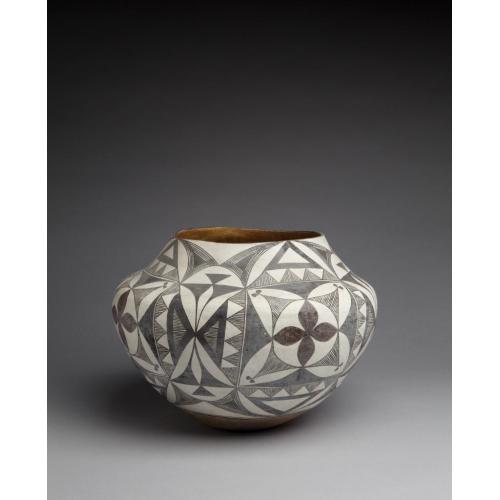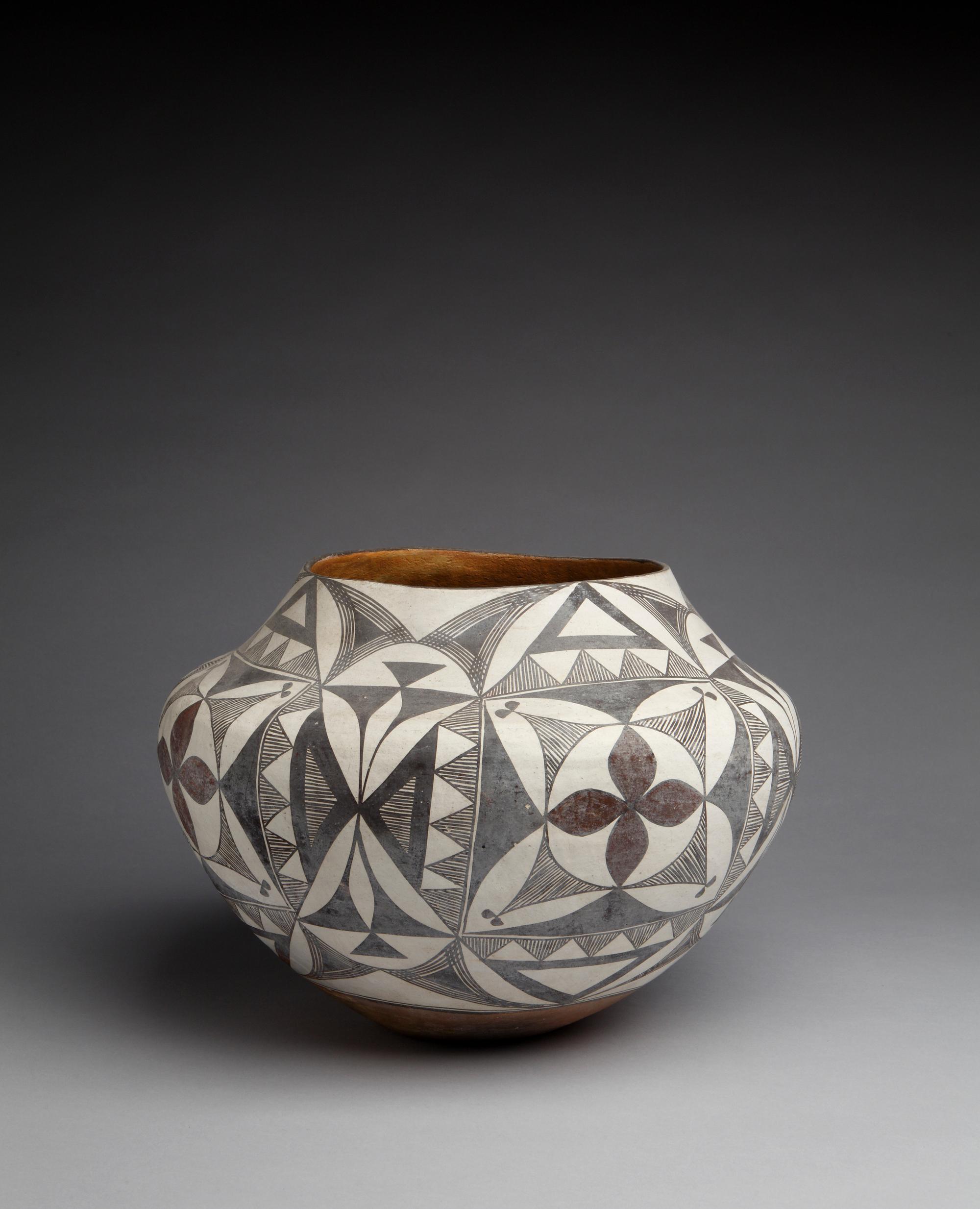
Photograph by Addison Doty. Copyright 2014 School for Advanced Research.
Water jar
Date: 1915-1920
Artist or Maker: Unknown
Dimensions:
Dimensions: 25.4 × 33 cm (10 × 13 in.)
Weight: 1.7 kg (3.85 lb.)
Medium: clay | paints
Credit Line: Gift of James H. MacMillan, 1925.
Place Made:
Valencia County, New Mexico, Southwest, United States, North America
Object Number: IAF.348
Not on view
Tribal Collection Review RemarksAccording to the participants in the Acoma collection review visit June 3-5, 2015 (Events Record “Collection Review: Acoma Pueblo, Review 2”): The design has rain lines in crisscrossing patterns, which Robert Patrico stated he heard were sometimes called yucca plants, wheat, or starbursts. The dark red designs are flowers. The whitish wash/haze that is visible on the black design areas may have been caused by having left the jar outside in the rain. Landis Smith, conservator, stated that this could be a chemical reaction with non-soluble salts coming to the surface, which has proven to be the case on pots she has tested before with similar features. The participants were able to conclude that potsherds were used as the temper for this jar after examining the pits. There is not a line break on this jar.
According to the participants in the Acoma collection review visit February 26-27, 2019 (Events Record “Collection Review: Acoma Pueblo Review 12”): The shape of a water jar is characterized by usually having a concave base (can also have a flat base) leading to a wider body and shoulder area. The shoulder, which is typically rounded but can also be sharp, leads inward and up to the neck and opening of the water jar. Historic water jars will sometimes have an indentation from the base the pot was built on (also known as a puki).
Water jars of all sizes are made and used. Medium to small size water jars are more commonly used to carry water as the weight of a filled water jar can become quite heavy. Large sized water jars would be used for storing water. Today at Acoma, water jars are still being used and made in both traditional natural and commercial materials.
In Collection(s)
Bibliography:
The Indian Arts Research Center, in collaboration with Native American community scholars, strives to present accurate collections records. Records may be updated as new information becomes available and is reviewed with the Native American community having cultural affinity to particular items. Please write to iarc@sarsf.org if you have questions or concerns related to the documentation.
